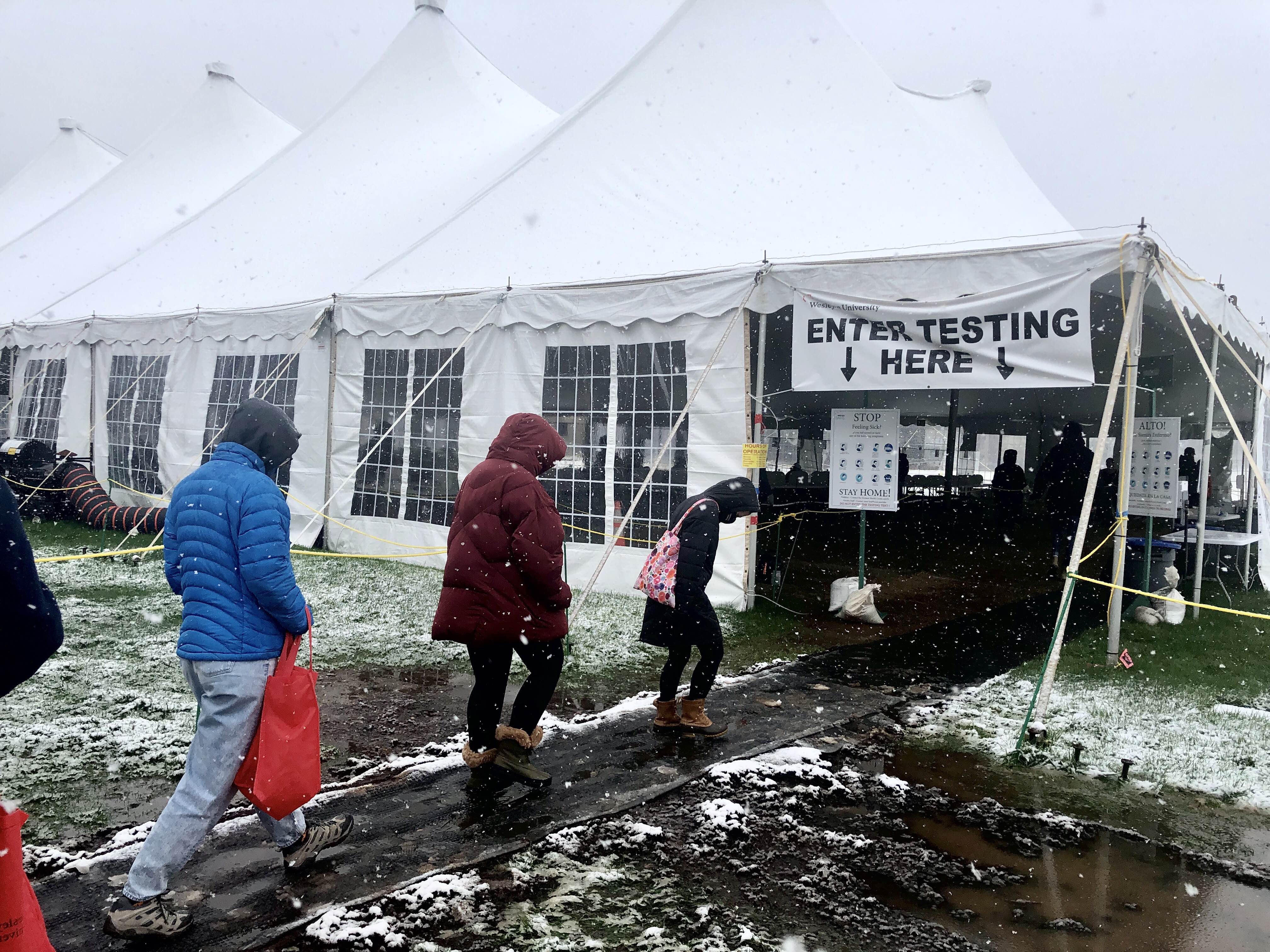
The University announced the temporary closure of the Freeman Athletic Center and the relocation of the COVID-19 testing center from outside on Andrus Field to inside Fayerweather Hall in an email sent by Associate Vice Presidents for Student Affairs and Dean of Students Rick Culliton, on Wednesday, Nov. 4. Testing will be moved indoors beginning on Monday, Nov. 9. The administration plans to reopen the Freeman Athletic Center on Nov. 10.
These changes follow a slight increase in the number of cases on campus and an earlier announcement from the University administration, which increased the COVID-19 alert level on campus from low (green) to medium (yellow).
According to the University’s COVID-19 dashboard, last week, there were six positive test results on campus out of 5,995 total tests. The resulting positivity rate, 0.1%, while higher than previous weeks, was still far lower than the positivity rate statewide in Connecticut, which stood at 4.2% on Wednesday, Nov. 4.
The testing tent was closed on Monday, Nov. 2 due to high winds. As a result, a record 2,400 students and employees were tested on Tuesday, Nov. 3. Despite worries among some students that cases would rise after Halloween, only three of the 2,400 people tested on Tuesday—one student and two employees—tested positive.
While more on-campus cases could be found, the positivity rate for the week remains low so far at just 0.12%. Currently, there are 8 active cases on campus: 6 students and 2 employees.
The administration and workers at the COVID-19 testing tent say that overall testing is going relatively well, adding that the recent negative test results are encouraging. Certified Nursing Assistant (CNA) Alfreda Smith who does intake work at the testing tent, is optimistic despite the small increase in cases on campus.
“It’s so minimal,” Smith said. “As long as they quarantine and we keep our social distance and our masks on, I think we can get through it. It’s just a little issue, it’s not a problem yet. So as long as we handle and contain the issue, it should be fine.”
The administration has long been planning to move the testing operation inside eventually to accommodate for winter weather. The date of the move, though, was only decided recently. Increasingly cold weather and darker mornings prompted the final decision to move testing inside on Nov. 10.
“For the last few weeks we have been dealing with weather challenges and darkness under the testing tent,” Associate Vice President for Facilities Joyce Topshe wrote in an email to The Argus. “The cold, dark and dampness at 7 a.m. are not conducive to the testing program and we have struggled to provide a comfortable work environment for the nursing staff.”
Topshe added that she thinks Fayerweather is well equipped to host the testing program, noting that the building has enough space and the appropriate ventilation to keep students and testing workers safe.
According to Topshe, it is also important for students to book their testing appointments ahead of time, particularly after things move indoors, where the capacity will be lower.
“Booking appointments allows us to balance the volume of tests throughout the day and minimize delays for our community,” Topshe wrote. “We will be limited in how many people will be allowed inside the Fayerweather building at any time and we don’t want long lines waiting out in the cold.”
Smith, citing the increasingly cold weather outside, is excited to move indoors.
“At least we can get away from the rain and the extreme cold,” Smith said.
Culliton, who chairs the University’s Pandemic Planning Team, explained that the decision to temporarily close Freeman was made out of an abundance of caution. It came after a few positive tests connected to sports teams.
“Other campuses have experienced large clusters or spikes among athletic teams,” Culliton wrote in an email to The Argus. “[T]he one-week closure of the Freeman Athletic Center allows us to collect another week of test results to be sure that we are reducing the likelihood of spread. We believe the one-week closure will help ensure that but will review the testing data this week and determine if any other steps need to be taken.”
While Culliton touted the low number of cases on campus, he urged students to keep following the University’s COVID-19 guidelines.
“We have 5 active cases among students on campus which is higher than we have seen this semester but we have had among the lowest number of cases among Connecticut colleges and among our peer schools as well,” Culliton wrote. “It should serve as a reminder that we all need to make sure we maintain the good practices that have helped us get to this point: maintaining 6’ distance, wearing face coverings and good hand washing.”
Correction: An earlier version of this article misquoted Dean Rick Culliton. Culliton advised students to maintain “6’ distance” not “feet of distance” from each other. The article also incorrectly stated that the COVID-19 testing tent was closed on Monday, Nov. 1 due to high winds and that a record 2,400 students and employees were tested on Tuesday, Nov. 2. The COVID-19 testing tent was closed on Monday, Nov. 2 due to high winds and a record 2,400 students and employees were tested on Tuesday, Nov. 3.
Ryan Jokelson can be reached at rjokelson@wesleyan.edu



Leave a Reply